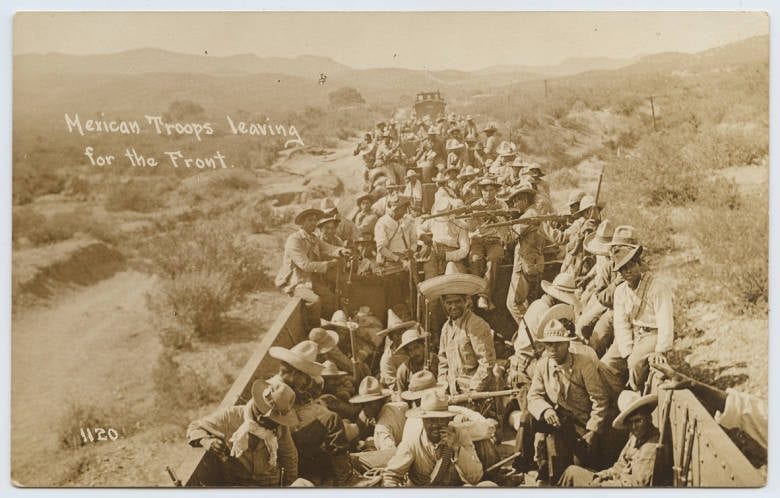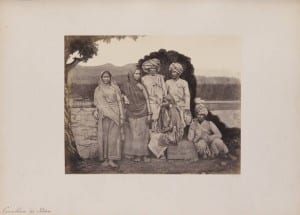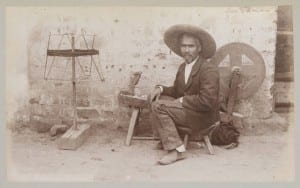In the drawing “Coombhars or Potters,” by William Johnson, six Indians are depicted gathered together. The six Indians are Coombhars or potters. The job of potters is to sculpt pottery into practical items such as bowls, or to create sculptures using clay or another type of material that can be molded.
Of the six Indians, three are male and three are female. Based on the facial features, there looks to be 3 different generations. The male figure in the middle looks to be the oldest because of his white moustache and beard. The male standing next to him has a black moustache and the third male sitting down does not look to have any facial hair. The oldest male could be the grandfather/father of the other two males. Just as with the males, the females look to be of three different generations. The female standing next to the eldest male has a face that droops lower, which would come with older age. The woman on the far left seems to be of a middle age and the youngest woman is also sitting, just like the youngest man. The three generations lead me to believe that this is a family of potters.
Potting, as an occupation is not a well-paid job or a job done be the higher social classes. The reasoning that led me to this deduction is based on the attire of the persons. None of the potters are wearing shoes, and, although they are dressed in native attire, there is no sense of luxury or nicer clothes, as we have seen in other drawings and photographs. Because of the lack of shoes, this job could not pay well enough for the potters to spare money on shoes; they need to spend the money on other necessities.
Although I made the deduction through facial features that the potters have a family connection by blood and marriage, I am curious as to what the real connection between all of them are. Are they all co-workers or is there a family connection that ties all or some of them together? Earlier in the class we learned about some of the exports and industries that largely make up Indian products, I am curious as to how big the industry of pottery was during this time period. This question arises because of the lack of shoes, which constitutes a lack of funds. The lack of funds would mean that potting is not well paid. Is this due to it being a large industry therefore anyone can do it so it is low wages or another reason.
http://digitalcollections.smu.edu/cdm/ref/collection/eaa/id/725
In the photograph “Mexican Spinning” taken in 1897 (Mayo & Weed), a lone Mexican man is seated at his workstation. His workstation consists of two wooden objects that work in sync with each other to create the product with a knapsack of tools behind him.
The man photographed is working as a spinner making a fabric of some sorts. Compared to the “Coombhars or Potters” drawing, this man looks like his occupation is of equivalence to potters in India. His workstation is along side a dirt path and it does not look to be of a high-quality workstation. The man looks tired and dirty, he may be working long hours and not have access to luxuries as often as someone from a higher social class. Although he has shoes on, the attire that he is wearing seems to be normal attire for a lower social class worker in that time period and geographical area. These are indicators that this occupation is one of the lower social classes. In the knapsack on the ground next to him could be more tools or materials that he would use during the process of spinning.
The photograph, coupled with lack of knowledge, raised questions for me. How do the wooden objects work with each other to create a product? What are the materials he using and what product is he trying to make, pants, shirt, hand towel? Is his workstation on the side of a public road, possibly right outside of his house? Was it common for people to be working on the side of a road or path back then?
http://digitalcollections.smu.edu/cdm/ref/collection/mex/id/210



